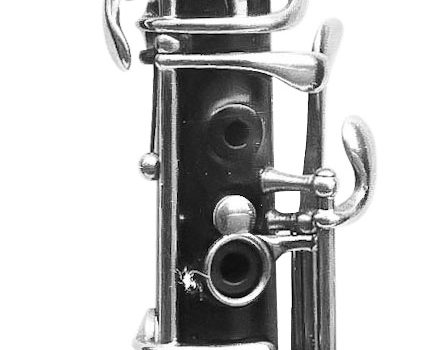The piccolo heckelphone is very similar to the normal heckelphone, but is characterised by its significantly small size. In addition, it is made from one piece, with only the bell removable. Furthermore, it has a significantly wider, conical bore and significantly larger tone holes. The joint is similar to the oboe, but much smaller. The piccolo heckelphone is in F and has a tonal range of E4 to A6. An instrument that is very similar to the piccolo heckelphone is the Heckel musette. The instrument is in F and has a range from F4 to G6 and sounds slightly softer than the piccolo heckelphone.
Piccolo Heckelphone
Construction
History
Even Johann Sebastian Bach was already longing for a wind instrument with a powerful, sonorous tone in the highest register, as the oboe, clarinet and piccolo flute were clearly lacking in this respect. However, a suitable orchestral instrument did not yet exist at that time.
It was only much later that the piccolo heckelphone – a further development of the heckelphone – was developed at the suggestion of Richard Strauss.
The piccolo heckelphone was used in 1909 for Richard Strauss’ first performance of Bach’s Second Brandenburg Concerto in the Royal Chapel in Berlin. In previous performances of this piece, Strauss repeatedly criticized the use of the high F trumpet, which was intended in Bach’s original part. He wrote in the “Berliner Börsen-Kurier” that it would not reach the desired pitch and was also generally far too loud and garish for the delicate chamber music work. Strauss therefore used the piccolo heckelphone for the high parts of the trumpet part and even had the F trumpet completely replaced by the piccolo heckelphone in the last movement in order to come as close as possible to Bach’s desired sound.
At the time, Richard Strauss even assumed that the piccolo heckelphone would “soon become one of the most indispensable orchestral instruments” due to its ease of play and excellent characteristics. In reality, however, the instrument was not able to establish itself in the orchestra. Only 21 piccolo heckelphones were built. The last instrument produced was made in 1955.
In 2024, the piccolo heckelphone was presented and exhibited at the Richard Strauss Days in Garmisch-Partenkirchen as part of the Heckelphone Festival together with the slightly larger terz heckelphone.
Use in Music
The piccolo heckelphone was mainly used by Richard Strauss, who was a great enthusiast of the instrument. For example, he used it in the last movement of Johann Sebastian Bach’s second Brandenburg Concerto instead of the insufficient F trumpet.
The Royal Court Kapellmeister Prof. Dr. Schlar, who worked at the Wiesbaden Opera, also had the instrument used in the operas “Fidelio”, “Siegfried” and “Tristan und Isolde”.
